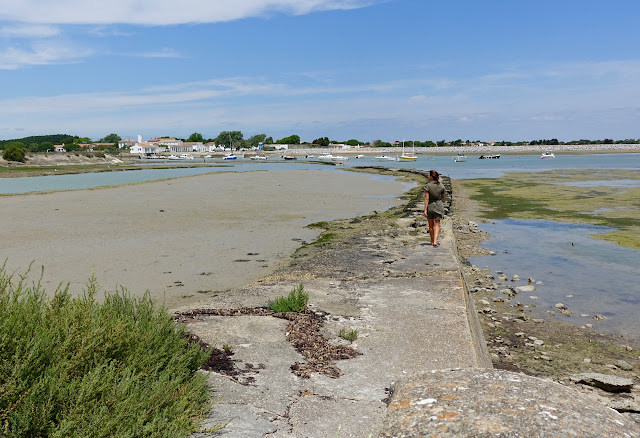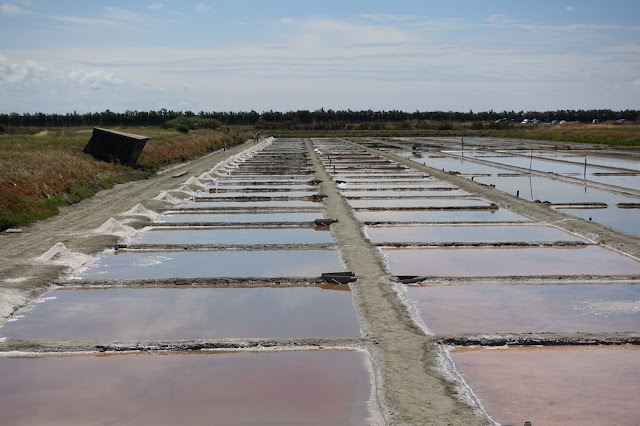

I headed to Ile de Ré to meet my brother, who was there doing a photo shoot. The place had long been on my list - Parisien friends all rave about the island and its natural beauty. Best was finding Stephen there.

I arrived and rented a bike to head out and explore. Stephen and I planned to meet up that night after he had finished his shoot. I took a ride along a coastal path and wheeled into charming Loix: deep-toned shutters against starch-white houses, high contrast. Hollyhocks in doorways, popping up and lining every wall. So much force in those plants. Cycling down a center village street I suddenly heard a familiar voice calling out my name. Stephen! He was walking back after lunch. "That looks like my sister," he said to a colleague. We laughed and celebrated seeing each other for a minute, then walked together back to the shoot location. I got a peek at the beauty. We hugged goodbye til later and I headed out for more exploration.



Perhaps most remarkable on Ile de Ré is the tide. The island transforms under its dominion. Riding back along the same coastal path, I found myself wondering if I had indeed taken this route earlier. Everything had been remade: the lines of the green, algae-covered oyster cages out in the sand - vanished; the small ports, where boats had been marooned in the mud - lying about in a disordered fashion, were now filled in with deep turquoise water, the boats bobbing peacefully. It had all seemed fixed, but in just a few short hours it was totally changed. Not a trace of the world that had been uncovered at low tide.




The rest of the weekend we explored together. We marveled at the movement of the water in and out.
The island is covered in salt marshes. The sauniers (salt farmers) with their long poles, raking the sherbet colored beds of salt, as they've done for hundreds of years in the same way.




Stephen and I stopped on a beach with an endless oyster farm out past the sand. Three farmers were out working in the rows, picking up and banging on the metal cages covered by emerald green algae one by one, then flipping them over. The tide was low. We talked to the farmers and asked them questions. These cages had been "seeded" four years prior; they would be ready for harvest in October of this year. I asked why they flip the cages. One of the farmers looked up and explained the oysters get tangled inside and "faire des bêtises" (make mischief - a French phrase often used when describing children). They turn them like this once a month during the four year period they are growing. "Je suis un bon papa pour mes bébés," he continued. The tide was rising around our ankles and soon grasped our calves. The window for their work was closing and the whole bed of oyster cages was swamped and soon completely covered by the ocean. Disappearing act.





We biked and hiked over the hard sand on long stretches of beach, through the salt marshes, passing horses and white swans and long water birds on delicate legs. The towns wore white with dark shutters: inhabitants in various moods, always dressed up in hollyhocks.





We rode to what might be the prettiest beach on the island: Plage de la Conche des Baleines, the lighthouse des Baleines resting on the horizon in the distance. Wide sand beaches and big rolling waves turning over the shore.
We laughed - Stephen's great gift of humor underlining the whole trip. Our neighbor on the train ride home had a difficult time veiling her smile as Stephen "spoke" French. "Trés ça va" is one of his classic lines. For a long time now he has insisted that he is Marguerite's professeur de français, producing a lot of French eye rolling and puffed out cheeks on her part. I can't wait for him to "teach" Colette and Romy some French this summer.
















1 comment:
What a beautiful island! Perfect weekend - thanks for sharing!
Post a Comment